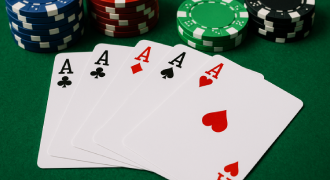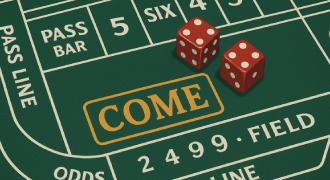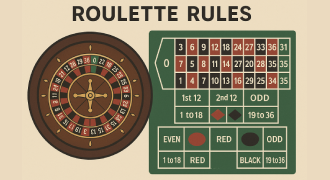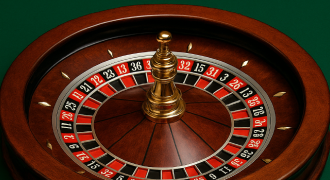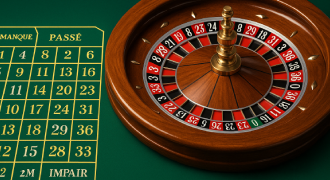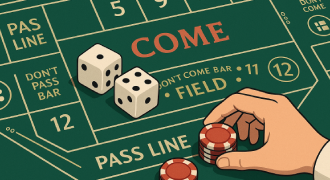Mastering Poker Strategy: useful tips for beginners
Every great Poker career begins with reliable foundations: clear decision rules, disciplined bankroll habits, and the patience to accept variance without panic. If you have ever wondered what is Poker strategy, think of it as a framework that transforms incomplete information into consistent choices. For those just taking their first seats, Poker strategy for beginners starts with understanding position, stack depth, and how board texture reshapes value from street to street. Treat this piece as a compact guide you can revisit after each session to refine judgment.
Poker Strategy Fundamentals
You will improve immediately by grounding your play in a few non-negotiables, starting with position, hand selection, and pot geometry. A strong grasp of Poker strategy is less about memorizing every line and more about recognizing patterns—dry versus wet boards, capped ranges, and the leverage of stack-to-pot ratio. As your experience grows, your adjustments become smaller and more precise, which protects your chips on bad runs and extracts more when advantages appear.
Newcomers benefit from a structured introduction to basic Poker strategy, emphasizing tight early-position play, selective aggression, and careful attention to bet sizing. Keep your mental load small at first: one decision at a time, one reason per action, and one plan for the next card if called.
Keep a simple note system after sessions: spots that confused you, hands worth simulating, and leaks to test later. This habit creates a feedback loop without ego or frustration, and it keeps your energy focused where improvement will matter most.
Review the table summarizing the basic principles of poker strategy for beginners. Use it as a quick reference guide to reinforce the basic concepts of position, hand selection, betting, and reading board textures before applying them at the table or in online play.
|
🔑 Concept |
📖 Explanation / Tip |
|
📍 Position |
Later positions = more information → play wider; early positions = tighter |
|
🃏 Hand Selection |
Play premium hands early; widen range in late position |
|
💵 Bet Sizing |
Adjust bets based on stack-to-pot ratio (SPR) and board texture |
|
📊 Board Texture |
Dry = fewer draws, more value bets; Wet = many draws, protect equity |
|
⚖️ Capped Ranges |
Opponent showing weakness? Exploit with controlled aggression |
|
🔄 Pattern Recognition |
Track tendencies: dry vs wet boards, frequency of bluffs, nut draws |
|
📝 Session Notes |
Record confusing spots, hands to simulate, and leaks to review later |
|
💡 Selective Aggression |
Raise when you have leverage; fold or check when behind |
|
🎯 Focus on One Decision at a Time |
Avoid overloading mental load; plan next card if called |
Importance of Table Position
Position magnifies skill because later action reveals more information at the same price. As part of your evolving Poker strategy, prefer playing more hands from the button and cutoff while tightening in early seats. Position turns marginal calls into profitable ones and helps you avoid thin, out-of-position bluffs that burn chips in the long run.
A practical trick: when uncertain in early position, fold more. When uncertain on the button, call or raise more, but still respect stack depth and the tendencies of blinds who defend too loosely or 3-bet too often.
Choosing the Right Tables for Your Style
Games differ drastically in pace, player pools, and average pot size, so choose environments that align with your current skill and temperament. You do not have to outplay the world; you have to join the right lineup and lean into predictable patterns. If the table tilts aggressive and multiway, sit tight, wait for structure, and value-bet relentlessly.
A short, practical digest of Poker basic strategy is to prioritize tables where weaker players limp often, call too wide, or telegraph strength with oversized raises.
Students who prefer measured growth often adopt Poker betting strategy guidelines that cap loss per session and use position to control pot size against volatile opponents. Try to track a few simple tells: who double-barrels light, who over-folds to turn aggression, and who reveals hand strength with rushed chips or inconsistent sizing. This information pays dividends for months.
|
🎰 Provider |
🎯 Paylines |
🔖 Paying Symbols |
🎁 Bonus Features |
🎲 RTP |
💵 Min Bet |
|
🧩 StrategyWorks Studio |
20 |
A, K, Q, J, 10; 🎲 Wild Chip; 🃏 Scatter Card |
🎡 Free Spins, ✨ Multiplier Trail, 🃏 Sticky Wilds |
96.7% |
$0.10 |
RTP explanation: This game lists a 96.7% RTP, which is a long-term theoretical return calculated over millions of spins, meaning that for every $100 wagered the average payback is $96.70 across very large samples. In real sessions outcomes will fluctuate widely because short-run variance dominates, so budgeting and stop-loss planning are essential. The minimum bet is $0.10 per spin, allowing small bankrolls to explore features before increasing stake size. Volatility trends medium-high, so expect quiet stretches interrupted by powerful bonus spikes; plan your session length and pacing accordingly.
Evaluating Hands and Equity
Your decision quality improves when you translate ranges and board texture into expected value, not gut feel. This is where pattern recognition and a handful of mental benchmarks simplify choices under time pressure. Recording tricky spots will speed up learning because repeated situations become automatic.
For new players, curated checklists of Poker strategy tips transform chaos into a short set of if-then rules that keep you calm in big pots.
Over time, your sense of proportionality—how big to build pots and when to control—becomes the backbone of your Poker strategy.
Starting Hands Selection
Begin with a narrow, coherent selection of openers that scales with position. Suited broadways, high pocket pairs, and suited connectors in late seats play well because they either make strong top pairs or draw to premium combinations. The aim is not to see flops; the aim is to see profitable ones with structural advantages you can exploit.
Tight, well-timed openers paired with strong discipline are a hallmark of the best Poker strategy for small and mid-stakes players learning the craft.
Recommended Hands for Early, Mid, and Late Positions
In early seats, focus on premiums: big pairs and strong suited aces. In middle, add suited broadways and the best connectors. On the button and cutoff, widen sensibly with hands that play well post-flop and can apply pressure without exposing you to huge reverse implied risks. The better your seat, the more your Poker strategy can emphasize initiative and maneuvering.
Keep notes on which configurations underperform, especially offsuit weak aces that look pretty but trap you with dominated kickers and thin value spots.
Opening Ranges by Game Format
Cash games reward deep-stack maneuvering, while multi-table events demand ICM awareness and stack-ladder pressure, which is the essence of Poker tournament strategy. Adjust open sizes, 3-bet frequencies, and flatting ranges by stack depth rather than copying a single chart for all situations.
During study, a tidy video Poker strategy chart can inspire how you organize your own pre-flop matrices, even though multiplayer dynamics require different assumptions. Find a clean layout you can review in minutes before play.
Pre-Flop Strategy Essentials
Your pre-flop decisions shape pot geometry and future leverage. Use smaller open sizes in late position to risk less while probing wider, and increase size against fields that overcall too liberally. When facing a 3-bet, think in buckets: value, bluff, and call. Keep compositions balanced enough that observant foes cannot punish you immediately, and remember that folding is a weapon that protects your edge.
Early on, avoid flatting speculative hands out of position against large raises; these spots create bloated pots with limited maneuvering room. When in doubt, simplify: value raise strong holdings, fold the trash, and keep your mind clear for post-flop problem solving.
Post-Flop Strategy Guidelines
Board texture dictates your plan. On dry flops, you can c-bet smaller with a wide range; on wet boards, choose larger sizes or more checks to protect equity. Target ranges, not hands—identify who is capped and who has the nut advantage, then design your sizing to pressure precisely those segments that struggle to continue.
Training solo games can teach discipline, and some lessons from video Poker strategy carry over in the form of careful payback analysis and structured decision trees. Multiplayer pots add the complexity of hidden information and counterplay, but the habit of verifying math before emotion translates well.
As your confidence grows, integrate blockers and removal effects into your Poker strategy so that your bluff frequencies align with combinations your opponents expect to see.
Bluffing and Semi-Bluffing Techniques
Bluffs tell a credible story when they represent strong, logical value lines. Semi-bluffs earn two ways: they can fold out better hands or improve on later streets. Choose candidates that pick up equity on many turns and rivers, and avoid forcing bluffs on textures where your range is obviously weak. Respect the discipline to slow down when a scare card helps your opponent more than it helps you.
Use alternative words for wagers if you are trying to reduce noise in your internal dialogue; clarity keeps emotion low when risk spikes. The more calmly you plan, the less your hands tremble when chips move.
Bankroll Management Tips
Survival through downswings is a skill. Separate Poker funds from living expenses, and size your casino games so that your typical downswing does not threaten your roll. Track results by session length and format rather than by day, then set review intervals that compare win rates, variance, and mental fatigue across logs.
Adopt a written plan with re-entry limits and clear recovery steps after losing sessions. Recovery does not mean chasing; it means resting, reviewing, and returning only when your focus is back. Responsible growth compounds over months, not nights.
Controlling Tilt and Risk Management
Tilt management begins before you sit down. Sleep, hydration, and a simple routine matter. When anger flares, take a timed break rather than narrating the injustice of your last coolers. Replace reactive chatter with a breath-and-reset habit. Risk management means you already decided how many buy-ins you will risk today and which hands you will not play from early positions no matter how bored you feel.
If you feel escalation, reduce table count, tighten ranges, and simplify lines. Pride will pressure you to win it back now; discipline will ask you to protect your future.
Setting Win/Loss Limits and Choosing Stakes
Define a modest win goal that triggers a graceful exit, and set a stop-loss that protects your state of mind. Choose stakes where one losing night does not force you to move down immediately, then plan step-ups only when your data confirm readiness. Confidence comes from repetition and proof, not bravado.
Your best habits will feel almost boring, but boredom is safer than panic. Write your limits on paper and keep them visible until they become second nature.
Adjusting Strategy to Opponent Types
Tag opponents quickly: loose-passive callers, tight-passive nits, loose-aggressive splashers, and strong regulars. Against callers, value-bet thinner with robust kickers and protect less with air. Against tight-passives, pick up small pots often with low-cost stabs. Against splashers, trap with strong hands and avoid marginal hero calls. Versus strong regulars, balance your lines and choose clear, coherent stories so they cannot exploit you easily.
Dynamic adaptation is not a gimmick—it is a practical discipline. Small, deliberate nips and tucks to your plan beat big, dramatic overhauls made mid-session.
Advanced Poker Concepts
As you progress, integrate range protection, node-locking ideas for study, and population reads that tailor your default frequencies. Calibrate your river bluffing thresholds to make opponents indifferent between calling and folding, and watch how slight changes in sizing alter their incentives on earlier streets. Learn to construct lines that keep your value and bluffs sharing the same blockers.
Promotions and side formats sometimes spark specialized approaches, and a focused write-up on bonus Poker strategy can help you understand how incentives alter optimal play during limited-time events. Track how rule tweaks change the environment so you are never caught off guard.
Common Strategic Mistakes to Avoid
Most beginners leak chips by calling too often out of position, c betting autopilot on bad textures, and refusing to fold shiny but dominated hands. Another frequent pitfall is importing advice from unrelated pits without translation. For example, guidance written for three card Poker strategy does not map cleanly to multiway no-limit formats where hidden information and stack leverage matter far more.
Be wary of rituals that feel like skill but are just superstition. Replace them with measured study, hand reviews, and targeted drills that fix one habit at a time.
Optimal Poker Strategy Summary
If you remember only a handful of ideas, let them be these: choose good tables, respect position, plan your lines, and manage bankroll with care. Keep your emotions off the chips and put your attention on why a bet is profitable. Your growth is a process—one session feeds the next—and patience will be rewarded.
Use a personal guide you can skim in two minutes before play: open sizes by seat, 3-bet ranges by stack depth, and a shortlist of turn and river cards you will attack on specific textures. With this checklist, you arrive ready to make fewer mistakes and more confident choices.
FAQ
What is the most important Poker strategy?
Prioritize position and discipline. Play more hands late, fold more early, and size actions to fit board texture and stack depth. These fundamentals stabilize results across all formats and stakes.
Should I always bluff?
No. Bluff less against callers and more against opponents who overfold. Choose bluffs with natural blockers and backup equity, and make sure your story matches lines you would take with value.
How crucial is table position?
It is decisive. Later action buys information and improves your odds of realizing equity. Position often turns marginal decisions into straightforward ones by clarifying who is capped and who holds the advantage.
How do pros manage bankroll effectively?
They separate Poker funds, track variance, and use conservative buy-in rules for each game. They also plan stop-loss and stop-win limits in advance and stick to them no matter how the last hand ended.
How can I practice Poker strategy safely?
Start at small stakes, play fewer tables, and review marked hands after every session. Use training tools and simple drills to rehearse common situations until your responses become automatic and calm.
Does strategy change in tournaments?
Yes. Rising blinds, antes, and payout jumps reshape incentives. You will tighten or loosen ranges based on stack depth and pressure points, and you will adjust to bubble and final-table dynamics that reward survival as well as accumulation.

